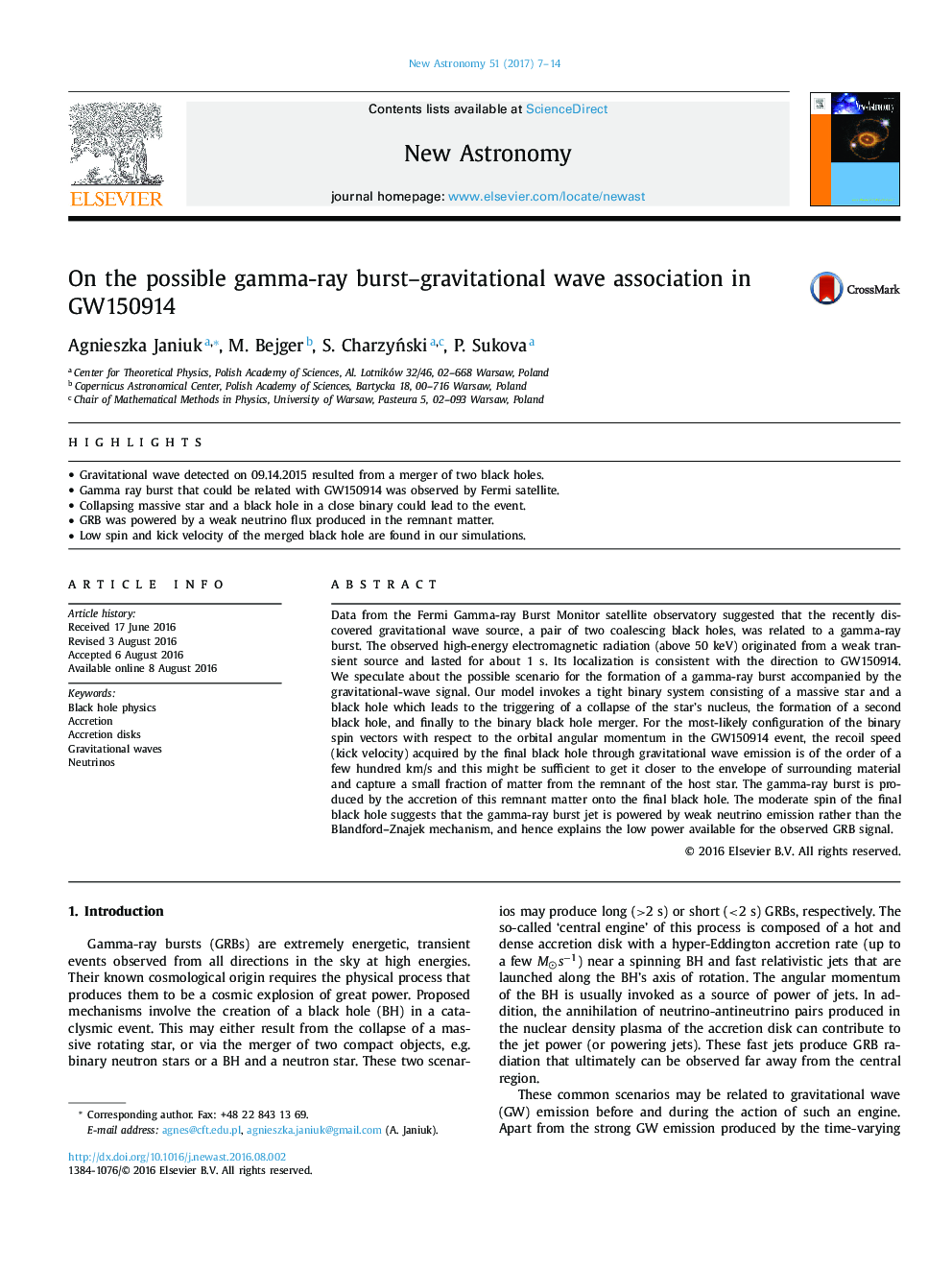| Article ID | Journal | Published Year | Pages | File Type |
|---|---|---|---|---|
| 1778667 | New Astronomy | 2017 | 8 Pages |
•Gravitational wave detected on 09.14.2015 resulted from a merger of two black holes.•Gamma ray burst that could be related with GW150914 was observed by Fermi satellite.•Collapsing massive star and a black hole in a close binary could lead to the event.•GRB was powered by a weak neutrino flux produced in the remnant matter.•Low spin and kick velocity of the merged black hole are found in our simulations.
Data from the Fermi Gamma-ray Burst Monitor satellite observatory suggested that the recently discovered gravitational wave source, a pair of two coalescing black holes, was related to a gamma-ray burst. The observed high-energy electromagnetic radiation (above 50 keV) originated from a weak transient source and lasted for about 1 s. Its localization is consistent with the direction to GW150914. We speculate about the possible scenario for the formation of a gamma-ray burst accompanied by the gravitational-wave signal. Our model invokes a tight binary system consisting of a massive star and a black hole which leads to the triggering of a collapse of the star’s nucleus, the formation of a second black hole, and finally to the binary black hole merger. For the most-likely configuration of the binary spin vectors with respect to the orbital angular momentum in the GW150914 event, the recoil speed (kick velocity) acquired by the final black hole through gravitational wave emission is of the order of a few hundred km/s and this might be sufficient to get it closer to the envelope of surrounding material and capture a small fraction of matter from the remnant of the host star. The gamma-ray burst is produced by the accretion of this remnant matter onto the final black hole. The moderate spin of the final black hole suggests that the gamma-ray burst jet is powered by weak neutrino emission rather than the Blandford–Znajek mechanism, and hence explains the low power available for the observed GRB signal.
